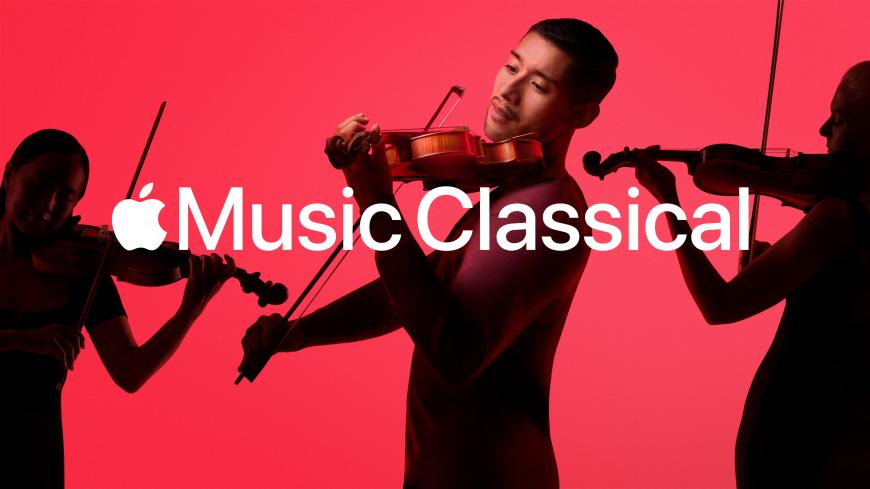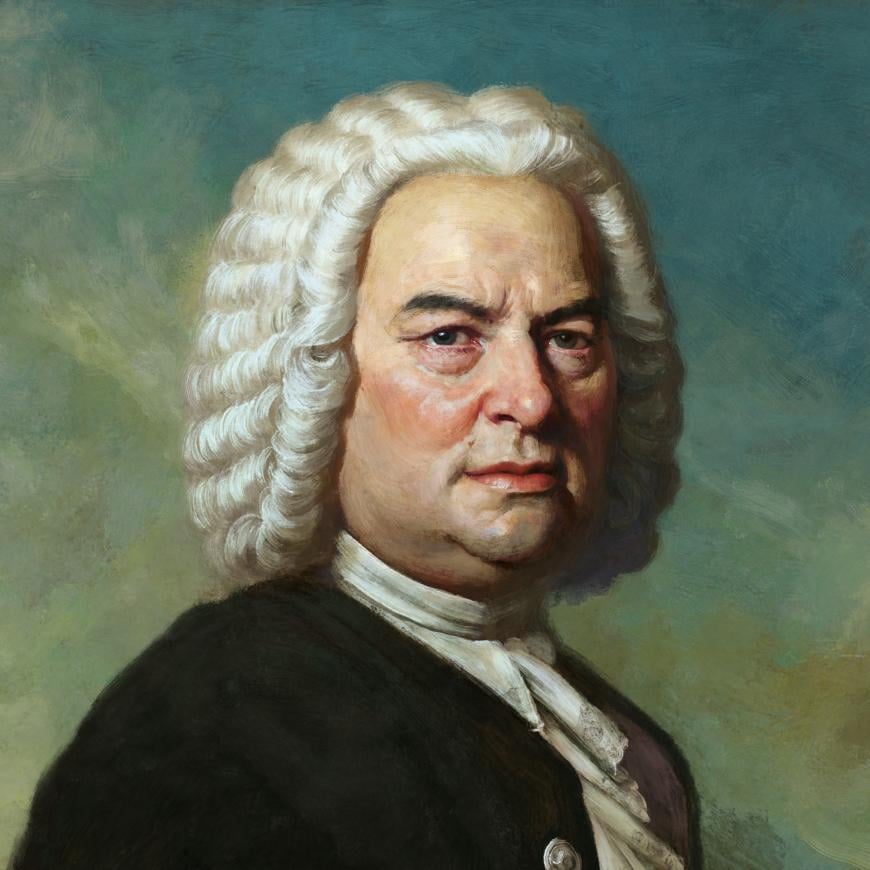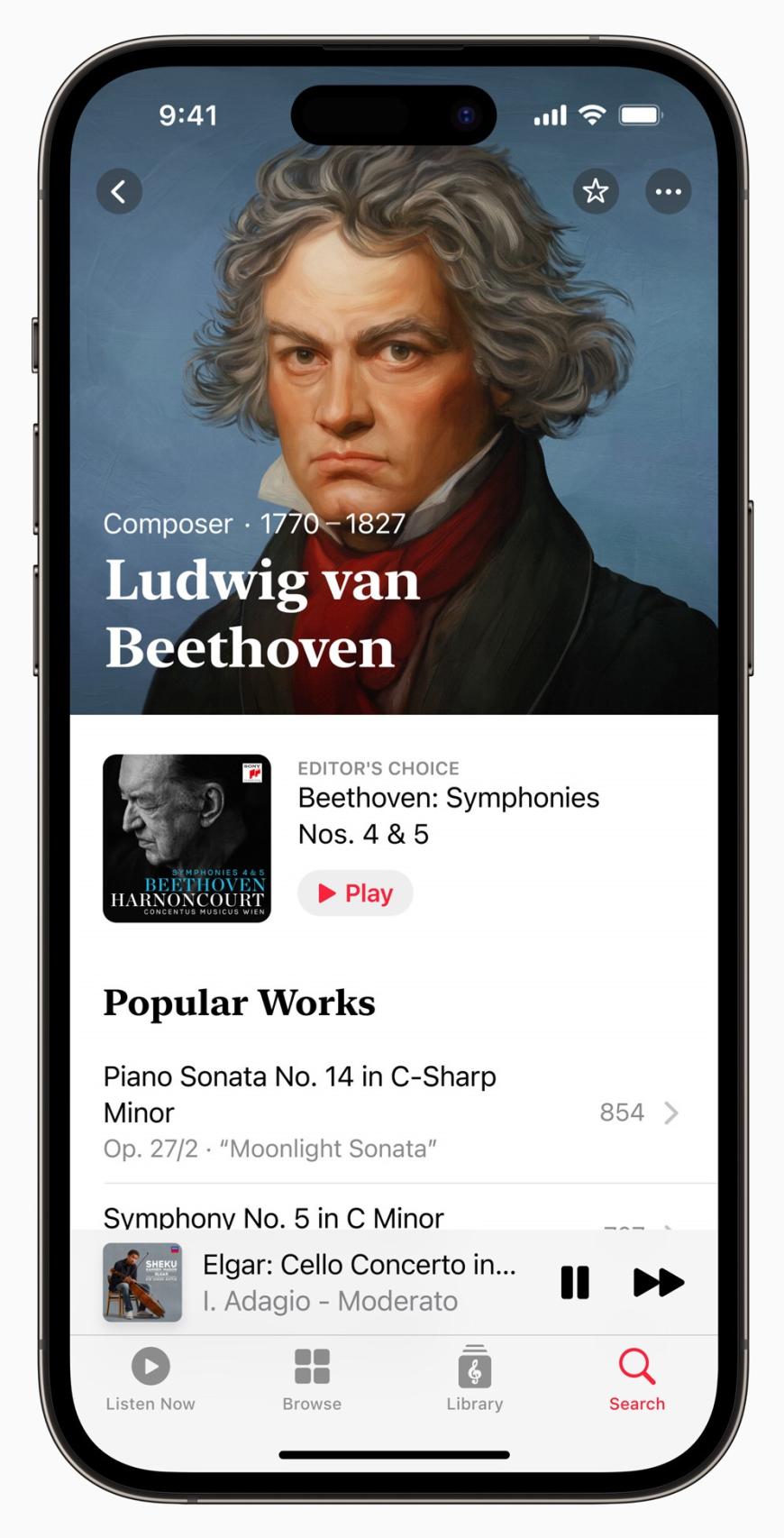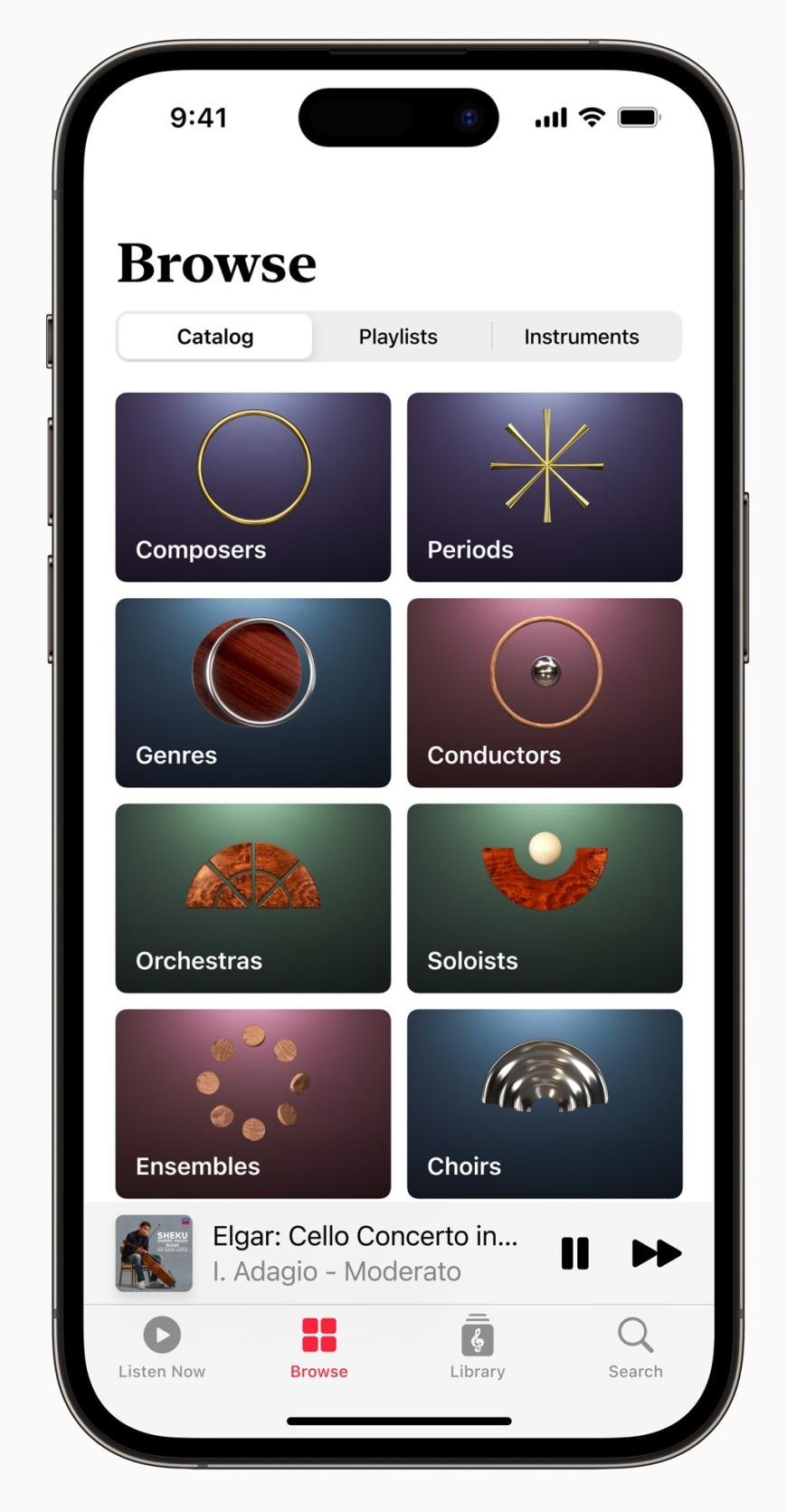
With anything that comes out of Apple, my first instinct is to try to look past the easily consumable exterior, the optimized and the convenient, and to get a sense of the actual content of the product. When dealing with such a powerful corporation, one that has fundamentally changed most people’s minute-to-minute lives, scrutiny is vital, particularly when it comes to the handling of our most effervescent and unending human resource: art.
Big words, especially when our time interfacing with Apple’s products is so often in the unthinking moments of waking up to hit snooze or passing time on the toilet. But with the advent of Apple’s new classical music-exclusive app, it’s important to discern what is flash and buzz from what is truly useful to classical musicians and fans — and where there is potential for broadening the love for this music.
Apple Music Classical launched on Tuesday, March 28; it’s the product of Apple’s 2021 purchase of the Amsterdam-based streaming service Primephonic. Founded in 2017, Primephonic rooted its business in creating a handmade database that remedied many of the difficulties associated with categorizing classical music for searchability. Chief Operating Officer Veronica Neo described it as a streaming service “designed by classical music lovers, for classical music lovers.”

Apple has largely taken the app wholesale and rebranded it with mostly aesthetic tweaks, including a series of new painterly composer portraits. The updated service also features exclusive recordings of live performances at Carnegie Hall and by the Berlin Philharmonic, the Chicago Symphony Orchestra, the London Symphony Orchestra, the Metropolitan Opera, the New York Philharmonic, the Opéra national de Paris, the Royal Concertgebouw Orchestra, the San Francisco Symphony, and the Vienna Philharmonic. It’s a separate app from Apple Music but free to download with any Apple Music subscription.
Apple Music Classical now touts the largest classical catalog of any streaming service — over 5 million tracks, 20,000 composers, and 115,000 unique works — but perhaps the most impressive aspect of this collection is the sheer number of data points inputted by hand: more than 50 million discrete pieces of information.
Modern music databases generally have searchable parameters limited to artist name, album name, track name, and maybe genre. Classical recordings, on the other hand, routinely have twice as many pieces of information that could be relevant to listeners: title, composer, opus number, date composed, ensemble type, key, movement, historical era, and so on. And that’s not even considering the specifics of the actual recording: album name, ensemble name, conductor, date recorded. Classical music has been more difficult to consume through standard streaming services because much of this information falls through the cracks of search functions, so Primephonic created metadata that supports more nuanced queries.
That search has been fine-tuned to the point where one can look up a famous piece by its nickname — like entering “Emperor Concerto” to find Beethoven’s Fifth Piano Concerto — and also search for composers using various spellings in different languages — for example, “Tchaikovsky” is written “Chaikovski” in Spanish. The database reflects the messy yet detailed humanness of history and culture in a way that warms my heart; it comes from love and attention and a desire to make this music more accessible.

But Apple Music Classical is not the first streaming service to home in on the particular needs of the classical catalog. Idagio, out of Germany, and Qobuz, out of France, both cater to the classical fandom. It will be interesting to see if Apple’s service is able to draw listeners away from these other boutique apps. Apple’s main appeal is convenience, and Idagio’s and Qobuz’s customers are already the type that are willing to go out of their way to find what they want.
Another unique aspect of Primephonic was its artist payout system, based on time consumers listened rather than number of plays. In a tradition where individual tracks can run half an hour or more, one can see why classical artists and labels have suffered under the number-of-plays model. A pop album might have upward of 20 short tracks and run the same time as a classical album with half that number of tracks. Primephonic’s setup rewarded artists and labels for extended play rather than instances of selection (either by the individual consumer or by algorithmic radio). It’s still unconfirmed whether Apple Music Classical will be continuing this model, and that decision will have a significant impact on the rest of the streaming industry and artists who face similar difficulties in other genres.
Apple Music claims that this app is designed for “longtime classical fans to first-time listeners, and everyone in between,” and the jury’s out on which particular demographics will embrace it. With its emphasis on the availability of lossless 24-bit/192 kHz audio files, Apple Music Classical is certainly trying to bring in audiophiles, though there are significant roadblocks between those files and anyone actually being able to hear them.
There are two things you should know about the high-definition audio available on this app. First, Bluetooth connections do not support streaming lossless audio. Second, as of now, the app is only available on iPhones, which can’t support the playback of lossless audio without an external digital audio converter (DAC) that can handle those files. For those with the necessary hi-fi gear to play these incredibly data-dense files (and the expendable income to afford it), there are still other barriers to playing these lossless files that come down to hi-fi culture itself. Apple Music does not play well with other programs like the popular music hub Roon, which is compatible with hi-fi streaming apps like Qobuz and Tidal. Those who have their home listening systems set up just so may not care for the exclusive nature of Apple Music.
Seemingly in the middle of the road between audiophiles and new listeners are people like me: practitioners. The majority of people I know who listen to classical music are players and composers, and doubtless the access to such a big and useful library will make research for performances, tackling lesser-known pieces, and nerdy deep dives into the repertoire just that much easier. We may not be rich enough to have the rigs for hi-fi recordings, but it still means so much to be able to find the exact music we are looking for. Our knowledge set feels native to this program.
It’s easy to see that Apple Music has gone to significant lengths to foster a new classical audience. There are a plethora of curated playlists aimed at helping inexperienced listeners: “Essentials” lists based on musical period, composer, or player; The Story of Classical introductory audio guide by Guy Jones (in nine hour-long episodes); and playlists put together by headlining artists like Yo-Yo Ma and Lang Lang.

The app does not yet have an algorithmic radio function, which is a significant difference from the core function of most other streaming services, though not surprising considering that many classical works are multi-movement pieces. Listeners on services like Spotify try to “tune” their algorithms to be most personalized to their own tastes and also use them to constantly discover new music. With Apple Music Classical, for whatever reasons, experts have been deemed necessary to stand in for the discovery function of algorithmic radio. (Old-time radio, with its DJs, still works this way as well.)
Where I see the greatest potential for this app is in the diversity of people Apple Music brings on to curate playlists. Anywhere there is a human (as opposed to AI) selecting an “Essentials” list, there will be intense scrutiny and contention. I immediately scanned the “20th Century Essentials,” “New Classical Essentials,” and “Contemporary Classical Essentials” (still unclear on the difference between those last two) for the presence of women composers and was disappointed to find none on the “20th Century” list and only mildly appeased with the representation on the latter two.
Regardless of whether Apple Music creates these lists with a culturally critical lens — interrogating designations like “essential,” “influential,” “important,” — the users of this app will be getting into these discussions. If Apple Music Classical wants to bring in new listeners, this curational approach, especially without the radio function, is necessary.
This is why I hope Apple Music takes this opportunity to focus funds and energy toward selecting a diverse range of curators. The Western classical tradition and the traces of its influence on so much of the world’s music are the product of colonialism and imperialism. It’s important that as this new app unfolds, especially with an aim to educate — really, an enrichening, joyous thing to try to do — it makes choices that are conscious of this past.


